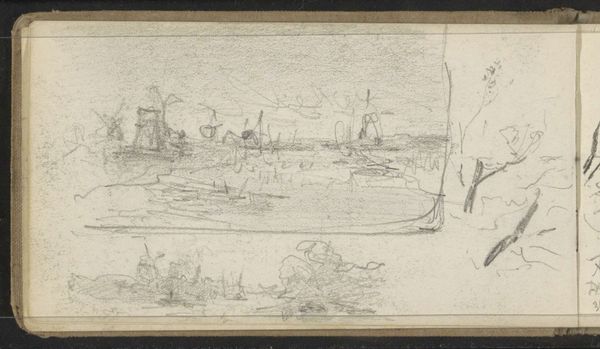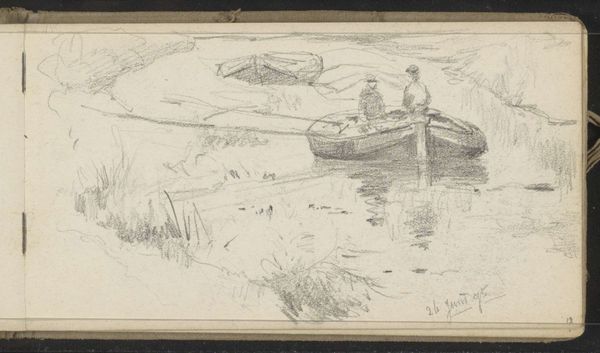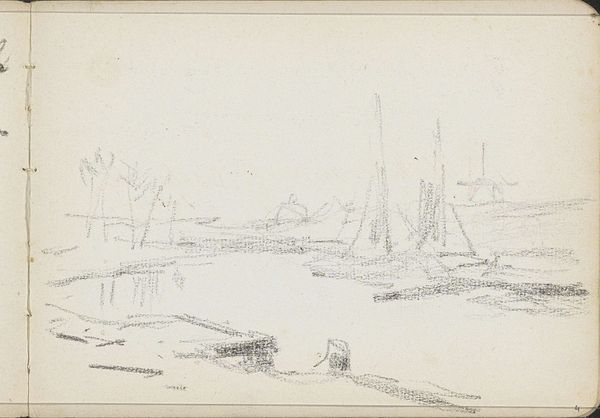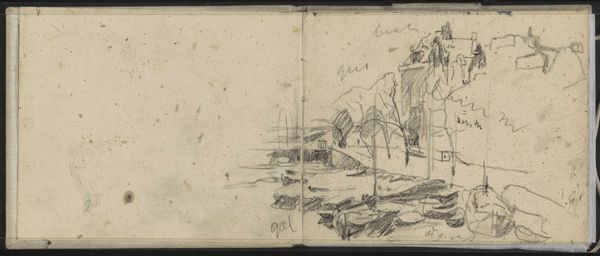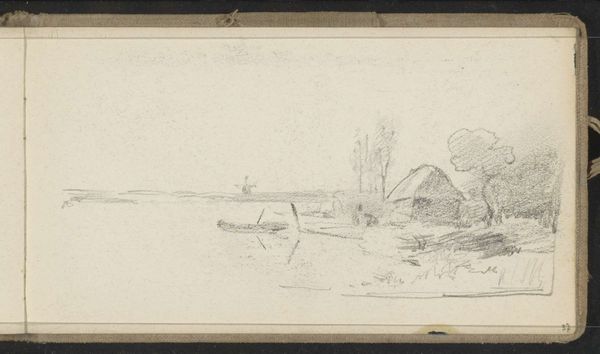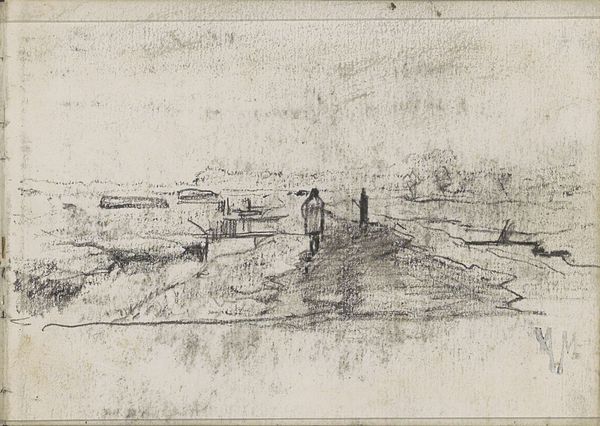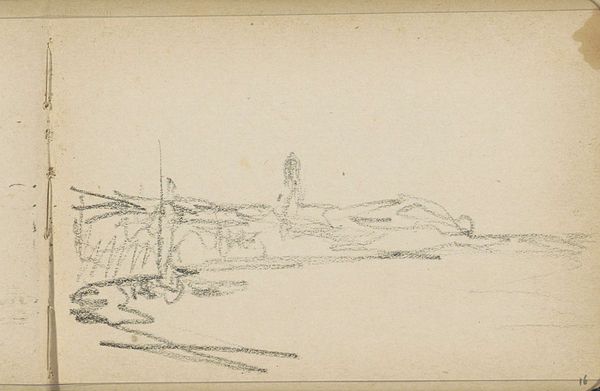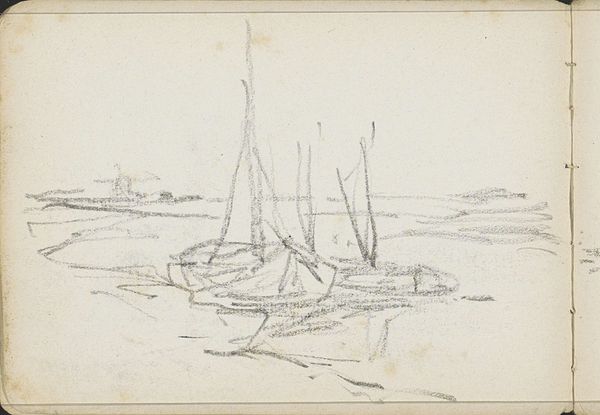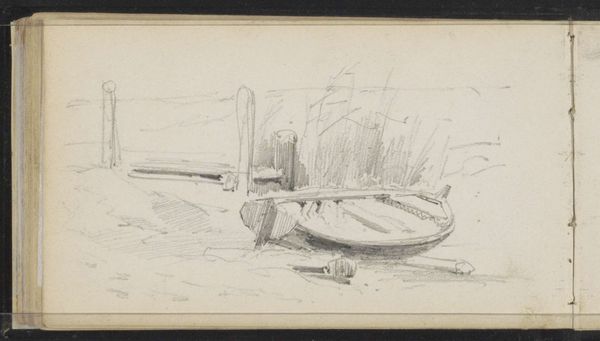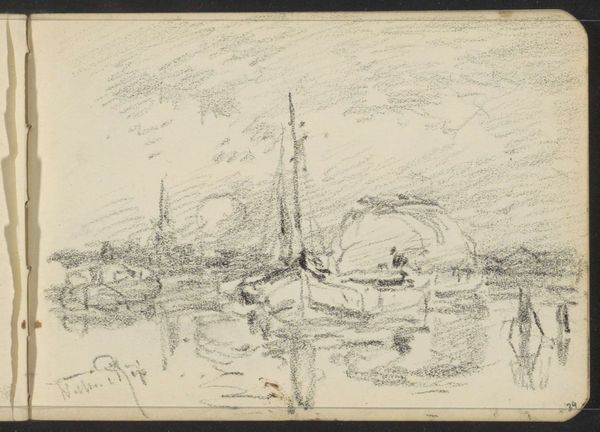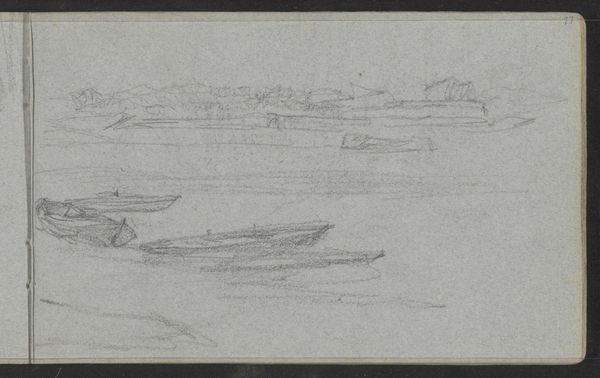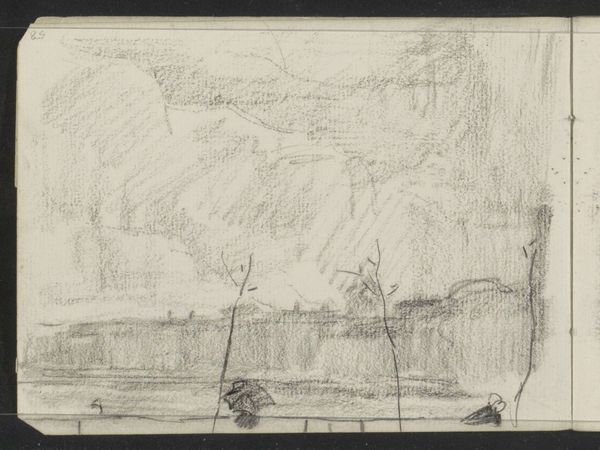
drawing, pencil
#
drawing
#
toned paper
#
quirky sketch
#
dutch-golden-age
#
pen sketch
#
sketch book
#
landscape
#
personal sketchbook
#
sketchwork
#
pen-ink sketch
#
pencil
#
sketchbook drawing
#
storyboard and sketchbook work
#
sketchbook art
#
realism
Dimensions: height 104 mm, width 179 mm
Copyright: Rijks Museum: Open Domain
Curator: Willem Cornelis Rip’s pencil and pen drawing, “Molens en een brug over het water te Zaandam,” made in 1895, presents a serene waterscape from the Dutch countryside. What's your immediate read? Editor: It's surprisingly calming given the subject matter—a hazy, almost dreamlike atmosphere conveyed through what appear to be spontaneous, flowing lines. The composition draws my eye toward the center of the canal. Curator: The structural organization is quite compelling. The bridge acts as a strong horizontal element, bisecting the composition and leading the eye back into the distance toward the windmills. Observe how Rip uses perspective to create depth, but without sacrificing the flatness of the picture plane. Editor: Yes, those windmills on the horizon carry potent symbolism. Windmills represent ingenuity and progress. This industrial encroachment, yet integrated within the gentle flatness, illustrates the Dutch triumph over water… a narrative deeply embedded in Dutch consciousness. Curator: Consider the interplay between the textures. The sketch-like quality contrasts sharply with the precise depiction of the bridge, showcasing Rip's technical skill. Editor: The presence of people fishing from small boats evokes images of quiet persistence. Fishing here functions less as a commercial activity and more like a cultural continuity: a traditional way of life enduring amidst the changing times of expanding industries. Curator: I am also taken with the drawing’s subtle nuances of value. The pale, toned paper serves as a middle ground against which the artist builds shadow with layers of graphite, defining shape and form in this study. Editor: Precisely, Rip has captured an era in transition. This is more than a pastoral scene; it embodies the reconciliation between tradition and the burgeoning industrial world. It evokes nostalgia for what might be lost, which lends a subtle melancholy to an otherwise picturesque vista. Curator: It’s intriguing how these compositional decisions create this contemplative experience, demonstrating Rip’s subtle control. Editor: A poignant capture indeed. These ordinary elements create a scene resonant with historical and emotional undercurrents.
Comments
No comments
Be the first to comment and join the conversation on the ultimate creative platform.
